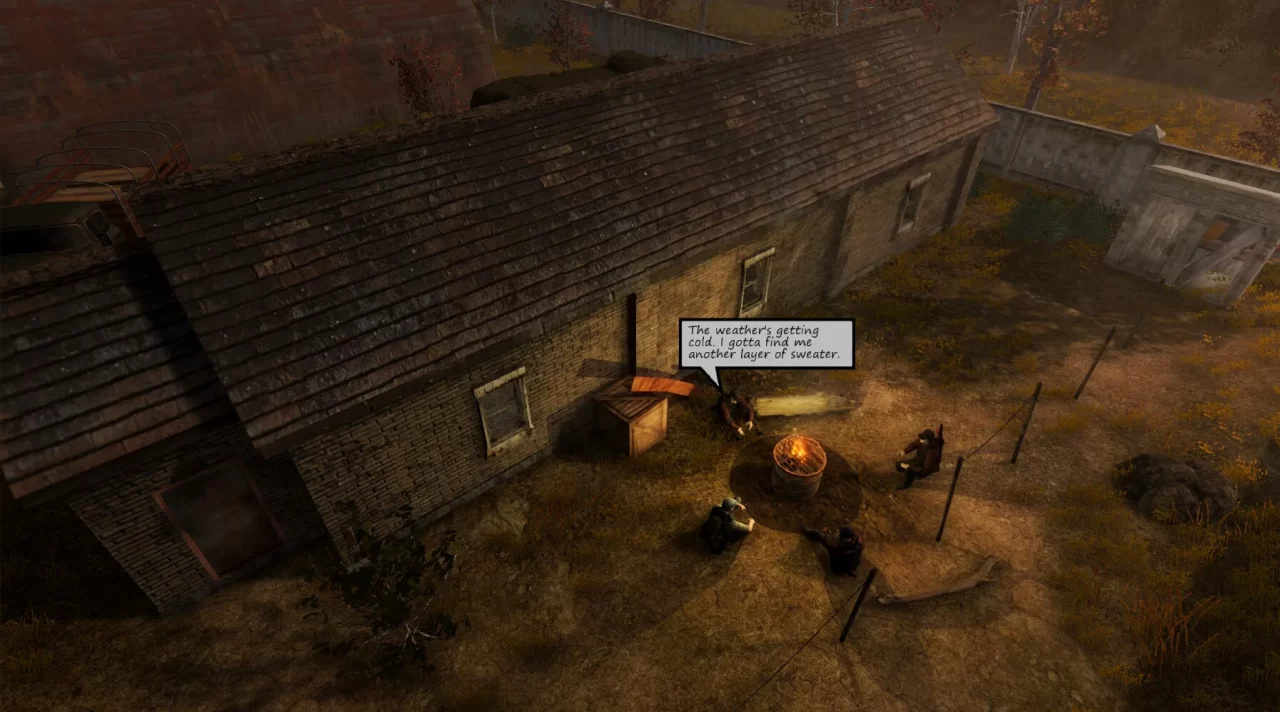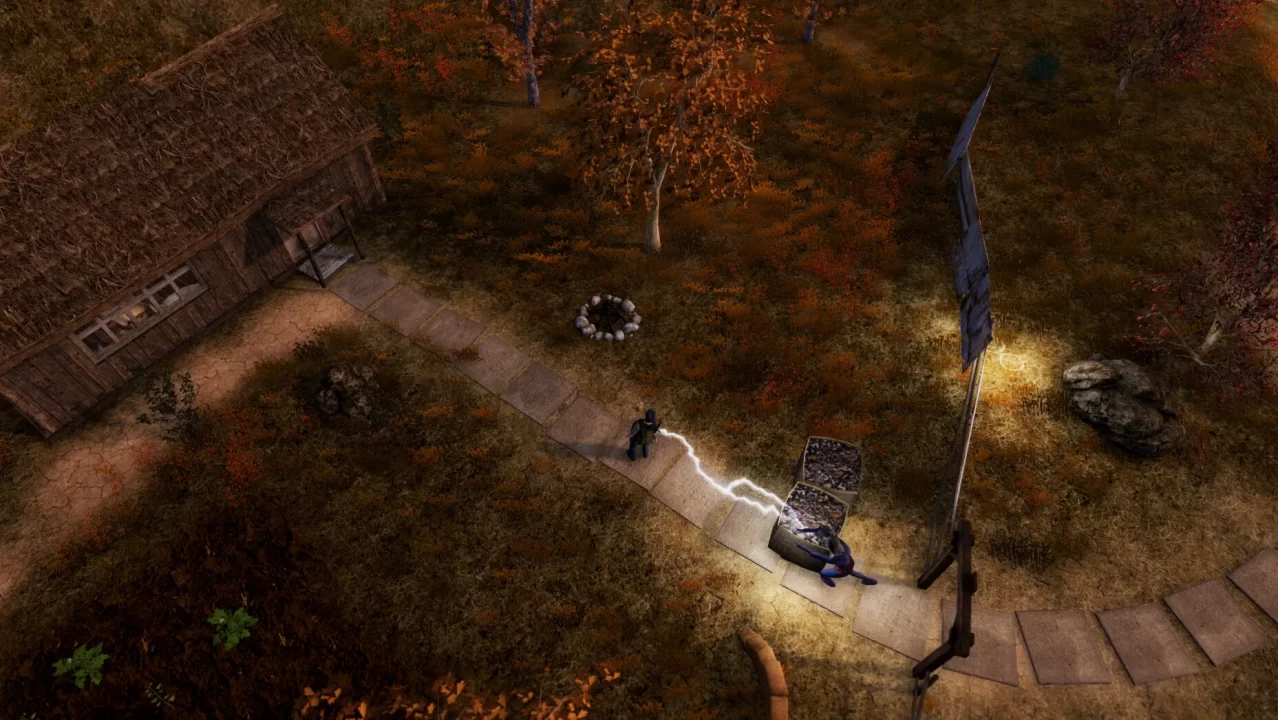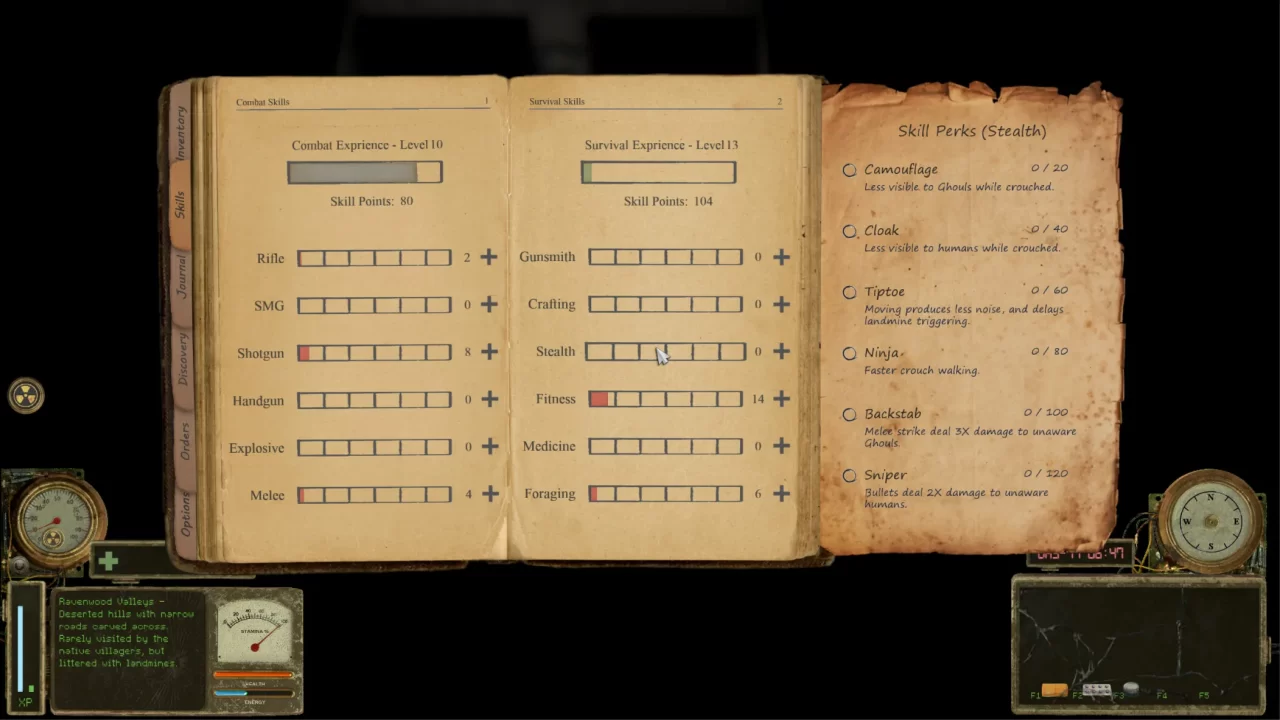Solo developers hold a special place in my heart. Seeing one person do the arduous work of multiple disciplines all the way to release is nothing short of inspirational. Home runs like Papers Please are also easy enough to praise from the consumer’s perspective, with the developer’s dedication shining through in the final product’s polish. While Tunguska: The Visitation (Tunguska) falls short of the remarkable heights of the indie hallmarks, it remains a notable effort by Rotorist Workshop.
Set in an alternate history where the Krasnoyarsk Krai region of Siberia became a hotbed for “treasure” hunters in the decades following the Tunguska Event, you take the role of an independent journalist sent to interview these hunters and investigate rumors of a miraculous cure-all. Despite the initially straightforward mission parameters, you quickly find yourself entangled in the area’s politics as you complete favors for locals while traveling between smaller, instanced segments of the Tunguska Exclusion Zone.
Although many NPCs remain ready for conversation, interactions outside of dedicated quest givers are barren. There is a veneer of a community in every hub area, but trying to talk to anyone outside of the main NPCs results in little more than repeated filler dialogue. Sitting around campfires sometimes yields a piece of gossip you can report to your sleazy boss in Manhattan for a chunk of change, but does little to fill out the narrative gaps in worldbuilding.
Quest completion rewards you with narrative tidbits that shed some light on the history of the Exclusion Zone and stories you can also report for better cash rewards. Quest givers occasionally throw in special items and inventory upgrades for your work, but notable rewards are few and far between. Thankfully, you usually stumble upon some fantastic loot while completing these favors (especially if you take the scenic route), making for some great emergent gameplay moments in otherwise run-of-the-mill fetch or kill quests.
Unfortunately, the moment-to-moment gunplay you engage in during quests leaves something to be desired. Despite the satisfying feedback for landing shots, the default controls make gunfights an almost unplayable experience. I highly recommend switching over to auto-aim in the settings, as you otherwise waste even more ammo than your character naturally does with their shaky aim. Even with these changes, gunplay remains finicky, with shots often missing stationary targets.
This starkly contrasts with the human AI, which often has far superior accuracy or gangs up on you in the blink of an eye, shredding your health bar in seconds with focused fire. However, their distinct inability to flank or execute complex combat behavior makes it surprisingly easy to funnel them to their deaths. This gives Tunguska a nostalgic, early 2000s feel, where gaming the AI in this manner was fairly common, enemy firepower nonetheless feels over-tuned to compensate for this lack of complexity.
Adding to this frustration are some diabolical map instances that felt unbeatable. Ghouls—humans who have turned into blue, zombie-like monsters from prolonged exposure to the supernatural “Vistation” event— spawn freely in most hostile map instances, trying to overwhelm you with numbers alone to compensate for their limited attack range. This balance falters towards the endgame with the appearance of elite ghoul variants. Getting some key items requires engaging with these forces, but to say it’s a slog would be an understatement. Despite my best efforts to kite these elite variants into a zombie train, I frequently fell victim to their high attack range and absurd tankiness, despite my high-end gear.
Skills and weapon attachments somewhat address the gunplay issues, but many of the skills should have been baked into the baseline gameplay. Consisting mostly of gun handling upgrades for different weapon classes, large overlaps in the early skills (lower recoil, better stability, etc.) make these upgrades feel like fluff more than meaningful investments of your hard-earned points. Looking at this in a positive light, early combat skills aren’t significant enough to hamper experimenting with weapon classes you haven’t invested points into. But then there’s the question of why these early skills exist, given their minimal impact.
Survival skills fare far better, with more varied aspects of gameplay like crafting, fitness, and serum (Tunguska’s version of potions) efficacy. Though I initially dreaded that these skills were a method of managing arbitrary, constantly dwindling resources typical of survival games, I was pleasantly surprised at Tunguska’s ability to strip away much of the tedium associated with these mechanics.
Basic bodily needs, such as hunger and thirst, are consolidated into a generous and slowly draining energy bar, which eating and resting easily restores. Radiation poisoning and T-Syndrome are the two big environmental hazards to manage, inflicting debilitating debuffs if left unchecked and requiring initially rare serums to fully cure. Health is the most difficult resource to get a proper handle on, as HP-restoring serums are your only source of recovery beyond taking a nap in a safe zone. The catch here is that these serums, due to their experimental nature, poison you with trace amounts of radiation for every injection. This small feature loops back to add an appreciable depth to the combat, rewarding forethought and supply preparation as much as your ability to think on your feet under fire.
However, skills that affect crafting and serums are so strong as to almost discourage engaging in these mechanics until you are close to maxing them out. Making stronger, more efficient consumables is one thing, but octupling production for the most powerful serums in Tunguska only brought out the worst of my RPG hoarding sensibilities. The fastest way of grinding all the points necessary to max these skills out is a dull affair of planting and harvesting plants (not too unlike iron dagger crafting in the early days of Skyrim), but ready access to console commands lets you skip the grind if it becomes too much.
Aesthetically, Tunguska excels at capturing the drab, post-apocalyptic vibe you might be familiar with from the Metro and S.T.A.L.K.E.R series. Admittedly, the color palette is a bit too brown for my liking, but the map instances make up for this with their unique layouts and landmarks. My only gripe was the oddly restrictive fast-travel system involving vehicles. The motorbike was the strangest to use, as you cannot travel too many map segments at once, despite the bike itself being able to go to most places in the game. As you can imagine, sitting through loads of loading screens got old quickly, which is especially frustrating when backtracking to home base for items you forgot to take from your stash.
That said, I wouldn’t be surprised if Rotorist Workshop is already acutely aware of these issues, as they are one of, if not the most, active developers I have ever seen. Steam forum posts generally get responses within minutes, from lending a guiding hand to newer players to sifting through copies of save files to debug issues. Though this doesn’t fully dull the blow of the aforementioned game design issues, Rotorist Workshop’s sheer commitment to improving the overall experience is inspiring. With a recently announced sequel in the works, I hope they can continue this energy into that project too.
Tunguska: The Vistation leaves a strong impression, though it’s not always the right one. It gets the more esoteric game-feel aspects, like combat feedback and satisfying exploration rewards, down pat, but struggles with fundamental design elements like control schemes and narrative. There is an undeniably large amount of jank in the game, which will either endear you to the experience or turn you off it entirely. Still, Tunguska is an enjoyable enough experience on its own that it’s worth giving a try to find out for yourself.





